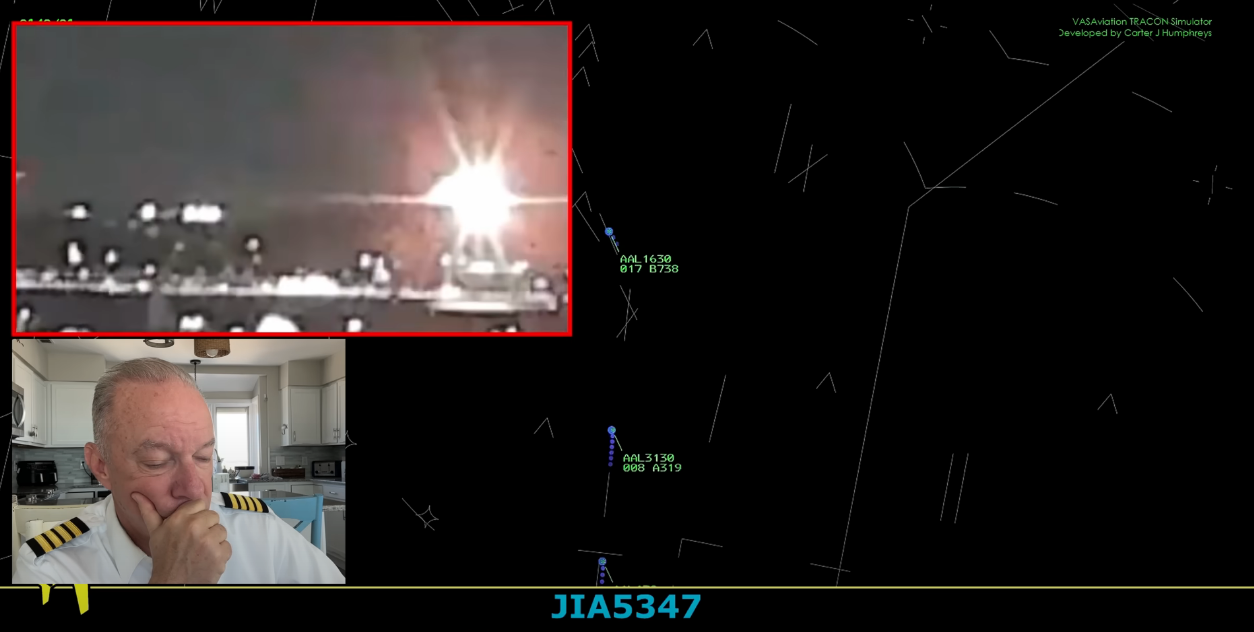On the night of 29 January 2025, above the Potomac River in Washington, D.C.’s metropolitan area, disaster struck mid-air: a collision between American Airlines Flight 5342 and a U.S. Army UH-60 Black Hawk helicopter that took 67 on both aircraft and reduced them into tragic remnants of lives lost, hence, an urgent need to know how all events transpired in preparation and a high-beam searchlight of concern toward ground communications ATC practices that developed surrounding such horrific circumstances.
It was also a highly congested segment of airspace because of its proximity to Ronald Reagan Washington National Airport, one in which civilian and military flight operations were highly integrated. The complication in managing this airspace underlines the critical importance of effective communications by ATC and adherence to established protocols regarding flights.
Aircraft Involved
American Airlines Flight 5342-a regional flight by American Eagle-had been headed from Wichita, Kansas, to Ronald Reagan Washington National Airport. The Embraer ERJ-145 jet was carrying 60 passengers and four crew members. At the same time, the U.S. Army UH-60 Black Hawk helicopter, with a crew of three, was on a routine training mission in the area.
The Embraer ERJ-145 is a twin-engine regional jet and has never raised concerns over its reliability. The aircraft is normally used on short to medium haul flights. The UH-60 Black Hawk is a versatile military helicopter used in many missions, including transport and training exercises. Both aircraft were operating under standard procedures when the incident occurred.
Sequence of Events Leading to the Collision
Preliminary reports indicated that Flight 5342, on its final approach into Reagan National Airport, collided with the Black Hawk helicopter over the Potomac River. While officials have not issued a final determination on the cause, the emerging information appears to suggest an incident involving miscommunication and perhaps deviation from allotted flight paths.
Investigators are trying to reconstruct the exact path of both planes by analyzing radar data and flight recordings. This is for the purpose of seeing whether any aircraft strayed from the altitude or heading assigned, and what possible factors were-such as mechanical failure or weather conditions-that contributed to this.
Air Traffic Control Communications
A key aspect of the investigation centers on communications between the planes and ATC. The FAA says that due to acute staffing shortfalls, a swamped air traffic controller was handling both planes. A miscommunication kept the helicopter pilot clear of the wrong flight – into the path of the fatal encounter.
The nature of the misunderstanding is under investigation; investigators are listening to ATC transcripts and audio recordings. Understanding the breakdown in communication is essential to preventing similar incidents in the future and to improve ATC protocols.
ATC Staffing and Workload
The incident has brought up serious questions regarding ATC staffing levels and their management of the workload. It has been reported that the controller on duty at the time was operating with multiple aircraft, which might have resulted in the miscommunication. The NTSB is investigating whether one or both of these factors might have played a part in the collision.
The aviation industry has faced challenges related to ATC staffing, including budget constraints and the need for continuous training. Ensuring adequate staffing levels and manageable workloads is crucial for maintaining safety in complex airspace environments.
Flight Data and Cockpit Voice Recorders
Investigators recovered flight data recorders from both planes. Data from these “black boxes” had been expected to be crucial in filling in the details of the last moments before impact, including data on flight paths, cockpit conversations and whether any system failures occurred. “While the recorders are in good condition,” the NTSB said in a statement, “analysis continues, and will be released once complete.
Analysis of the flight data and cockpit voice recorders will determine the actions of flight crews and any possible technical malfunctions. The information obtained will be used to develop recommendations for improving aviation safety to prevent similar accidents in the future.
Regulatory and Procedural Considerations
The FAA has imposed temporary restrictions on helicopter operations around Reagan National Airport since the collision, allowing only emergency and presidential flights. This is to prevent recurrence while the investigation is in progress. There is also a renewed effort to review and possibly revise ATC procedures, particularly in handling mixed civilian and military air traffic in busy airspace.
The FAA coordinates with the military representatives to enhance protocols for coordination and communication between civil and military flights. This coordination is intended to provide clear guidelines and enhance situational awareness among all airspace users.
Public and Political Reactions
The tragedy has sent shockwaves among the public and political figures. President Trump blamed the accident on the helicopter flying too high and attacked the FAA’s staffing levels and diversity policies under the Biden administration. Critics, including aviation officials and political figures, have attacked Trump for making speculative and divisive comments since the country should wait for thorough investigation results to draw conclusions.
Aviation safety experts have urged caution against premature conclusions, highlighting the complexity of such investigations. They advocate for a comprehensive analysis of all contributing factors before assigning blame or implementing policy changes.
Conclusion
The mid-air collision over the Potomac River is a grim reminder of the complexities and risks inherent in aviation operations, especially in highly congested airspace. As the investigation unfolds, it will be very important to conduct a thorough review of ATC communications, staffing protocols, and flight procedures to understand the contributory factors surrounding this tragedy and to implement mitigating measures against recurrence.
Indeed, the aviation community was keenly watching the results of this investigation to help develop improvements in the future. The lessons learned from this incident would most likely shape policy decisions, training programs, and technological development toward minimizing the chances of recurrence.












